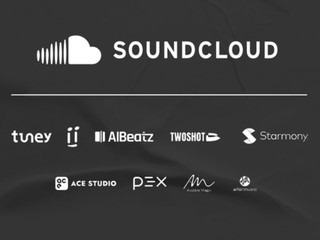

It’s an understandable perception: you hear the word gamification, and when pronounced correctly [gay-muh-fi-kay-shuhn], the word “game” slaps you right in the face. It must be about making games and playing and having fun, right?
Wrong. In fact, it’s the exact opposite. To understand why, let’s start by turning back the clock a bit.
[Editor’s note: Rajat Paharia, founder of Bunchball, will be speaking Vator Spark Get Game conference on May 1, at the new incubator at Berkeley Skydeck. Register here. Use #vatorspark when referring to the event.)
In 2005, Rajat Paharia founded Bunchball as a social games company, long before people were planting virtual corn or throwing birds at pigs. He noticed that every time he was making a game, he was using a similar set of techniques to engage players: he would give people a clear problem to solve like completing a puzzle in a defined period of time, he would give them a measure of progress like points and levels, he gave them a sense of social status like high score tables, and he would provide some degree of reward, like unlocking new levels or getting new abilities. None of these were revolutionary concepts – in fact, game designers had been exploiting these same exact techniques for years, particularly in the video game space, and as a result millions of people would devote hours and hours trying to save princesses from gorillas, collect pellets in a maze or help a frog cross a busy freeway.
This made sense: the game designers knew that if you satisfied very basic human needs and motivators around progress, status, and reward, people would become deeply engaged in your programs. And they weren’t the only ones who knew this: for decades, martial arts instructors have given their students colored belts as a measure of progress, they’ve bestowed status in the form of rank relative to students with lesser belts, and they’ve rewarded students with ceremonies and recognition when they’ve “leveled up” to a new belt. The travel industry has also known this: give people miles as a measure of progress against acquiring a new level like “Premier Executive,” give them status with early boarding, and reward them with better seats and upgrades, and you will get people to not only engage with your loyalty program, but they will buy seats on your airline over others.
But for some reason, these game mechanics that so deeply engaged people were completely missing from where they were desperately needed: consumer and enterprise digital experiences. In a world where hundreds of thousands of sites launch every month vying for user engagement, and where millions of people are asked to use enterprise software for hours a day at work, none of these proven engagement techniques were present, in large part because it wasn’t easy to implement them.
But what if we had the technology to add these game mechanics that the game designers (and others) have exploited for years, and applied them to consumer facing websites and enterprise software applications? Would we get the same levels of engagement?
Rajat wanted to find out, so in 2007 he built a cloud-based “gamification engine” that would allow businesses to add missions, levels, points, leaderboards, and rewards to any digital experience to drive high value user behaviors, with rich analytics to understand what was happening. He called it Nitro, and signed up NBC as a customer. They didn’t want a game, they wanted high levels of engagement on the website for their hit show The Office. And they got it, big time – to the point where, 5 years later, NBCU uses Nitro today across the majority of their marquee brands like Bravo, USA Network, SyFy, Telemundo, and others. And thus the Gamification movement was born. Not making games, but borrowing the techniques that game designers have always used to engage audiences.
Fast forward to today, and gamification is now being applied in the enterprise: not so that employees can goof off, but to help them be more productive.
Again, these techniques aren’t new: the notions of progress, like completing milestones in a project, status, like your reputation in a company, and rewards, like recognition in front of peers or a promotion, are nothing new and have been proven time and again to motivate workers, but they are completely missing from the tools we’re being asked to use on a daily basis at work. As a result, the tools go unused and employees become disengaged.
That’s all changing. Companies large and small are beginning to see a massive opportunity to leverage game mechanics in the enterprise to engage employees in initiatives and applications to get better work done faster – to increase productivity in a way that actually motivates, engages and retains their employee base.
Here’s an example. Imagine opening up Salesforce.com and seeing a mission titled “President’s Club.” To earn the “Presidents Club” award, you need to complete the following missions in Salesforce:
– Hit 110% of quota
– Close 5 opportunities worth $150K or more
– Add 10 new accounts
– Enter 5 new C-Level contacts with complete records
– Be one of the first 5 people to complete the above missions
The employee would not only have a clear problem to solve, but, in real time, can track the progress he or she is making, right in Salesforce.com, without the need for any manual tracking – its all automatically being tracked as work is being done. That progress is completely transparent to others in the company, bestowing a degree of status compared to those who will also be competing for the President’s Club reward. Most business leaders would love to have their employees focused on and completing those missions in the enterprise software tools that the company has invested time and money in deploying. They clearly map to business results and smack of productivity.
Which is the exact opposite of what many people think of when they hear the word gamification.
At Bunchball, we’re partnering with a number of companies to make all of this a reality. Our Nitro for Salesforcesolution makes the above scenario completely possible, today. We’ve brought gamification to Jive and IBM Connections to help employees quickly learn how to use these applications to be more productive, faster. And we’re just getting started.
So for now, while we’re still in the early days, it’s understandable that the term gamification conjures up images of employees playing games, even if that’s the exact opposite of what’s happening. But at Bunchball, we proudly stand behind the term and always have, and believe that over the course of the next two years, gamification in the enterprise context will, by default, be associated with highly engaged, highly productive employees. We’re looking forward to playing a big part in making that happen.
(Image source: simplyzesty.com)


















